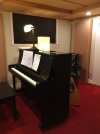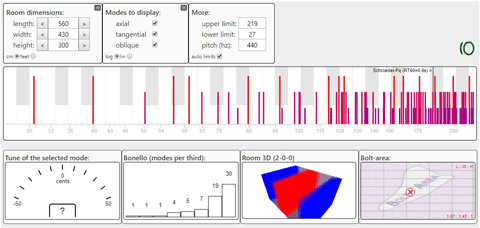Tim Link
Major Contributor
I'd put those diagonally across a corner, stacked up to the ceiling, so there's a triangular void behind them. If you can create a pressure change across a fiber panel by creating a void behind it, that's going to push a lot more motion through the fiber than putting the panel in a room null, where velocity is highest. The problem is, the velocity isn't very high in room nulls. I experimented with this using painter's plastic to create a large membrane. I wanted to see how much that membrane moved when pushed by the air in a null zone. It hardly moves at all. And this was at a very powerful null zone at the mouth of my bass horn, which causes a huge suck out in the response of my horn at 85 Hz. My attempts to absorb down the problem by using fiber resistance at the mouth of the horn were yielding very little result. The plastic sheet explained why. I could feel it vibrating even when the sound mostly disappeared because of the null, so I knew the air was moving in and out of the horn. But the plastic barely had to move at all to accommodate the motion. So, to put any brakes on it you need a solid membrane with adequate mass. It ends up more of a limp mass membrane problem. I could see a velocity absorber as being a very large limp mass membrane on a frame, open on both ends. If you put that in a null zone of a room and orient it correctly, it might break up the standing wave. Basically you've broken a large room up into two smaller rooms, at least partially, with a membrane that's acting as a soft wall that can move enough to take some energy out of the air motion in the null, and hopefully not create two smaller modes in the process. If the mass and stiffness are properly chosen it should take a lot of standing wave energy out of the room.Now, are products like https://www.gikacoustics.com/product/gik-acoustics-monster-bass-trap-flexrange-technology/ which purportedly reach down to 80 Hz (I suppose so long as they are actually positioned at a velocity peak for said frequency) useless in the sense of one's being better off solely using thinner broadband panels for midrange to treble absorption, or is it just a matter of positioning?
Edit. It doesn't really matter if it's a limp mass or a fiberous material of adequate impedance, or a solid material with perforations. So long as it offers up the appropriate impedance it'll rob energy out of the standing wave.
All absorbers must somehow reduce motion. There's no way to absorb pressure that I know of without creating a pressure differential that causes motion.
Last edited:





